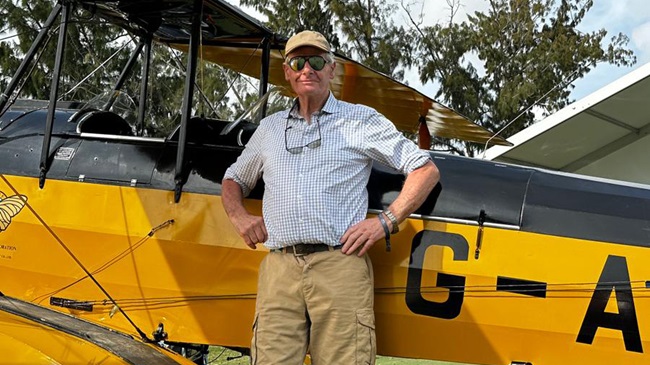Cessna L–19 Bird Dog: A soldier’s best friend
Sniffing out the enemy from 1,000 feet agl
Related Articles
Photography by Mike Fizer
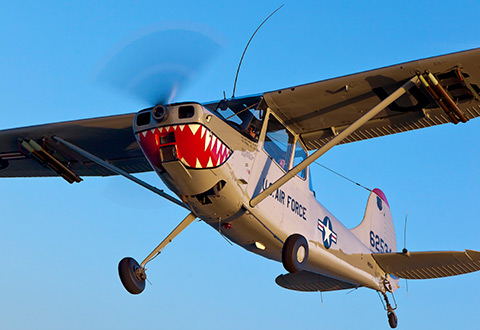
In August 1949, Cessna Aircraft Company learned that the U.S. Army wanted a new, all-metal liaison airplane to replace its aging and shrinking fleet of fabric-covered Piper L–4 Grasshoppers and Stinson L–5 Sentinels. The Army planned to evaluate all competing aircraft during a “fly-off” at Wright Field in Dayton, Ohio, the following April.
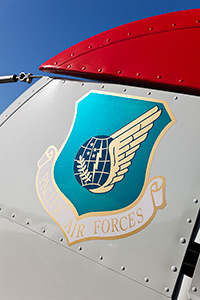 With so little time available to develop an entirely new airplane, Cessna began work by mating the tail of a Cessna 195 and the wings of a Cessna 170B with a newly designed fuselage. The effort was particularly challenging because one of the military specifications required that the airplane be capable of taking off and landing over a 50-foot obstacle in less than 600 feet at its maximum-allowable gross weight. The prototype was built in 90 days; made its first flight on December 14, 1949; and handily won the competition against entries from Piper, Taylorcraft, and Temco.
With so little time available to develop an entirely new airplane, Cessna began work by mating the tail of a Cessna 195 and the wings of a Cessna 170B with a newly designed fuselage. The effort was particularly challenging because one of the military specifications required that the airplane be capable of taking off and landing over a 50-foot obstacle in less than 600 feet at its maximum-allowable gross weight. The prototype was built in 90 days; made its first flight on December 14, 1949; and handily won the competition against entries from Piper, Taylorcraft, and Temco.
When enemy ground troops spotted a Bird Dog flying low and overhead, it gave them good reason to believe that something bad might soon happen. Although the L–19’s slow speed made it vulnerable to ground fire, enemy soldiers often would not shoot at one for fear of revealing their position.
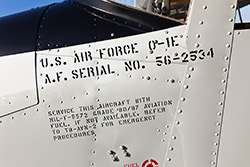 In 1962 and during America’s early involvement in Vietnam, the Department of Defense standardized aircraft designations, and the L–19 (L for liaison) suddenly became the O–1 (O for observation). During the Vietnam conflict, enemy targets were marked by firing white-phosphorous smoke rockets at them. These burst on impact and generated intense white clouds that were visible for miles.
In 1962 and during America’s early involvement in Vietnam, the Department of Defense standardized aircraft designations, and the L–19 (L for liaison) suddenly became the O–1 (O for observation). During the Vietnam conflict, enemy targets were marked by firing white-phosphorous smoke rockets at them. These burst on impact and generated intense white clouds that were visible for miles.
There are endless war stories involving the venerable Bird Dog. One of the most fascinating involves Maj. Bung-Ly, a South Vietnamese Air Force pilot who crammed his wife and five children into a Bird Dog on April 29, 1975, to escape the North Vietnamese takeover of South Vietnam. They took off from Con Son Island, skirted enemy ground fire, and headed into the Gulf of Thailand with the hope of finding a rescue ship rumored to be somewhere out there. After a long overwater flight and running low on fuel, Bung-Ly finally spotted USS Midway, its flight deck jam-packed with helicopters. He circled the ship a few times and then flew low over the deck to drop a note written on a chart. It pleaded for some helicopters to be moved so that there would be room for him to land. The Midway’s captain, L.C. Chambers, did not believe that the seven occupants of the Bird Dog could survive a ditching in the rough sea, so he ordered $10 million worth of Huey and Chinook helicopters scuttled overboard to allow Bung-Ly and his family a shot at landing on the rain-soaked, windswept flight deck. Bird Dog 51-4981 is now in the U.S. Naval Aviation Museum in Pensacola, Florida, and the Bung-Ly family, sponsored by the crew of the Midway, lives not far away.
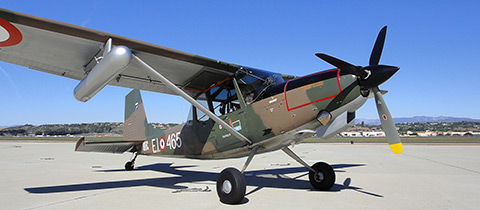
SM.1019: Airframe manufacturer SIAI Marchetti created the SM.1019, a larger, more powerful version of the Bird Dog. The aircraft shown here, N2525M, belongs to John Schwamm, a real estate developer from Alaska. “The 1019 is appealing because it allows you to buy a turbine-powered airplane for the price of piston power,” he says. His airplane was restored by Starr Farmer of White Wings Aircraft Services in Anchorage. Schwamm bought it for $200,000.
The pristine Bird Dog shown on these pages is owned by Troy Cobb, a retired businessman and 2,000-hour pilot. A self-declared “history nut,” he very much wanted to buy a warbird but discovered that most were too expensive for him to own and maintain. “The Cessna Bird Dog is ideal,” he says. “It is both affordable and fun, and I enjoy flying low and slow. The really good news is that the airplane is FAA-certified in the Normal category.”
He purchased N62534 (military number 56-2534) as a restoration project in 2005. The 1956 airplane had originally been based at Fort Riley, Kansas, as an Army reconnaissance airplane and wound up as a floatplane in Alaska. It never saw duty outside the United States. Cobb spent a year restoring the 4,400-hour airplane, and emblazoned it with the shark-mouth paint scheme used by the 19th Tactical Air Support Squadron that was based at the Bien Hoa Air Base near Saigon.
Cobb’s Bird Dog was finished in time to be flown to Sun ’n Fun in 2006 where it earned the title of Grand Champion in the category of post-World War II warbirds. You have to see this airplane to appreciate his attention to detail. The under-wing hardpoints on Cobb’s airplane contain dummy marking rockets that look like the real thing. The white rectangle on the fuselage aft of the cabin door was used to write in grease pencil the specific weaponry with which the aircraft had been armed for any given flight. Cobb estimates that his airplane is worth about $160,000, but most L–19s sell for between $60,000 and $150,000.
Some Cessna engineers thought during the “patchwork” design process that the Model 305 would be an ugly airplane, it turned out not to be. Almost all who fly the Bird Dog regard it as lovable, an adjective taken perhaps from the title of Minard D. Thompson Jr.’s definitive book about the L-19, The Lovable One-Niner.
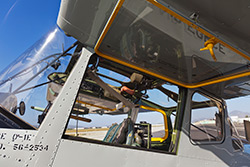 It takes some effort to haul one’s self into the pilot’s seat, and serious contorting is required to climb into the rear “observer’s” seat. Once inside, you are surrounded by military feel and ambiance. The throttle, mixture, and carburetor-heat controls are clustered in a military-style quadrant on the left sidewall. The only cockpit features that remind me that the Bird Dog is a Cessna are the float-type fuel gauges in the wing roots. These are identical to the gauges found in other Cessna singles of that era.
It takes some effort to haul one’s self into the pilot’s seat, and serious contorting is required to climb into the rear “observer’s” seat. Once inside, you are surrounded by military feel and ambiance. The throttle, mixture, and carburetor-heat controls are clustered in a military-style quadrant on the left sidewall. The only cockpit features that remind me that the Bird Dog is a Cessna are the float-type fuel gauges in the wing roots. These are identical to the gauges found in other Cessna singles of that era.
The control stick in the rear cockpit is noticeably taller than the one in front. This presumably is to provide the flight instructor with additional leverage to overpower a student manhandling the controls. The rear stick is easily removable, and the rear rudder pedals can be folded flat and out of the way to give an observer plenty of room to move around.
Although the flaps are extended manually in early models of the L–19, they operate electrically on later models.
A normal Bird Dog takeoff involves using 30 degrees of flaps. As the flight controls become effective, raise the tail slightly and the airplane leaves the ground at 55 mph. I prefer instead to keep the tailwheel on the ground and allow the airplane to levitate in its 13-degree, three-point attitude.
Climb rate is almost 1,000 fpm (or more when lightly loaded). At the top of climb, however, the Bird Dog’s
performance comes to an end. Cruise flight is little more than 100 mph. If you have a need for speed, this airplane is not for you. The 213-horsepower, six-cylinder Continental O-470-11 engine swings a long, 90-inch, fixed-pitch propeller, but one model, the L–19D, has a constant-speed propeller and, in some cases, a second instrument panel for a backseat instrument student.
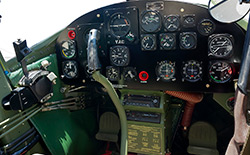 The L–19’s cockpit is roomy and visibility is as good as it gets in a single-engine airplane. On a warm day, you can open the upper half of the cabin door, which swings up and out, like the one on a Piper J–3 Cub. This, plus acres of Plexiglas, help make the Bird Dog an effective observation and reconnaissance aircraft.
The L–19’s cockpit is roomy and visibility is as good as it gets in a single-engine airplane. On a warm day, you can open the upper half of the cabin door, which swings up and out, like the one on a Piper J–3 Cub. This, plus acres of Plexiglas, help make the Bird Dog an effective observation and reconnaissance aircraft.
An outstanding example of this occurred on February 24, 1967, when USAF Capt. Hilliard A. Wilbanks spotted a South Vietnamese hillside pockmarked with camouflaged foxholes that could be detected only by a trained eye flying low and slow. The Viet Cong lay in wait, hoping to ambush an approaching and unsuspecting South Vietnamese Ranger unit. With an M-16 rifle as his only weapon, Wilbanks made repeated passes over the VC position in an attempt to disrupt the enemy from springing its trap. Wilbanks was shot down during this engagement and was posthumously awarded the Congressional Medal of Honor.
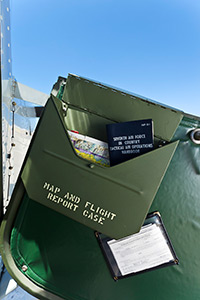 You might recall that the wing flaps on early models of the Cessna 172 could be lowered 40 degrees. Cessna reduced this to 30 degrees in later models because 40 degrees create so much drag that some pilots inadvertently get too low and too slow during a landing approach. Well, the Bird Dog has 60 degrees of slotted flaps, and fully extending them is like opening a pair of barn doors. You get the feeling that speed brakes have been deployed and the airplane is stopping in midair. You need to be serious about getting the nose down or adding a fistful of throttle to prevent the L–19 from falling out of the sky. Should you really want to come down like a stone, perform a maximum-effort slip with the flaps fully extended.
You might recall that the wing flaps on early models of the Cessna 172 could be lowered 40 degrees. Cessna reduced this to 30 degrees in later models because 40 degrees create so much drag that some pilots inadvertently get too low and too slow during a landing approach. Well, the Bird Dog has 60 degrees of slotted flaps, and fully extending them is like opening a pair of barn doors. You get the feeling that speed brakes have been deployed and the airplane is stopping in midair. You need to be serious about getting the nose down or adding a fistful of throttle to prevent the L–19 from falling out of the sky. Should you really want to come down like a stone, perform a maximum-effort slip with the flaps fully extended.
Airspeed bleeds rapidly during a landing flare into a three-point attitude with full flaps, so be sure to carry an adequate reserve of airspeed with which to flare. Most Bird Dog pilots land with a flap setting of only 30 or 40 degrees. The spring landing gear makes wheel landings challenging, as it does on single-engine Cessna taildraggers with similar landing gear. It is ideal, however, for a military airplane because of its energy-absorbing capacity in the event of a botched landing or a forced landing in rough terrain.
The pilot’s manual for the L–19 is thorough. It states, “In case of an emergency landing in enemy territory, open all fuel drains and ignite the fuel from a safe distance.” In the section labeled, “Pressurization System,” the manual advises matter of factly, “The O–1 aircraft is not equipped with a pressurization system.”
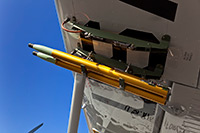 Cessna had built 3,395 Bird Dogs when production ended on January 22, 1957, and it provided them to the military forces of almost every country in the Free World. There currently are about 300 L–19s registered in the United States. Although many are owned by warbird aficionados, others have served in the workforce as glider tugs and search-and-rescue platforms for the Civil Air Patrol.
Cessna had built 3,395 Bird Dogs when production ended on January 22, 1957, and it provided them to the military forces of almost every country in the Free World. There currently are about 300 L–19s registered in the United States. Although many are owned by warbird aficionados, others have served in the workforce as glider tugs and search-and-rescue platforms for the Civil Air Patrol.
In the late 1960s, the Italian army expressed a need for an observation airplane with significantly more performance than its Bird Dogs had. The Italian airframe manufacturer SIAI Marchetti responded. The result was the SM.1019, which first flew on May 24, 1969. The Italian reconnaissance airplane has a 317-shaft-horsepower Allison 250-B15G turboprop engine that provides a 150-knot cruise speed at 10,000 feet and a service ceiling of 25,000 feet. The SM.1019 is almost four feet longer than the Bird Dog and has thicker skin, a beefed-up wing, a larger vertical fin to assist in controlling the additional horsepower, and a separate rear door for the passenger. SIAI Marchetti built about 80 of these aircraft, and 20 to 25 of them are registered in the United States. A few are powered by the Allison 250-B17, a 420-shaft horsepower engine (flat-rated to 350 shaft horsepower) that became available toward the end of the SM.1019’s production run.
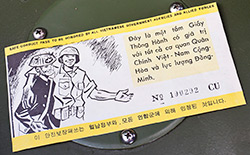 The repository now for everything about the Bird Dog is the International Bird Dog Association. It used to publish a magazine titled Bowwow, but now the association instead emails to its members a newsletter called The Monthly Bark.
The repository now for everything about the Bird Dog is the International Bird Dog Association. It used to publish a magazine titled Bowwow, but now the association instead emails to its members a newsletter called The Monthly Bark.
Cobb says that beyond the joy of flying a Bird Dog is the camaraderie with those who own and fly this great airplane. “The L–19 guys are a close-knit group, and form a wonderful circle of friends. I’m having a hard time getting rid of them,” he says with a wink and a smile.



